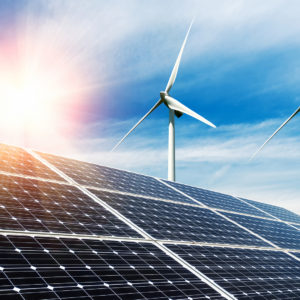This spring looks very different than the one just a year ago. The world’s attention has shifted from COVID-19 to the threats created by rising inflation, supply chain disruptions and Russia’s war in Ukraine. These issues are putting immense pressure on American citizens and elected officials alike, and, understandably, are overshadowing other significant challenges.
As we celebrate Earth Day (April 22), we are reminded that we must not lose sight of the continuing and urgent need to address climate change. Over the last year, extreme weather events have caused unprecedented damage across the nation. And forecasters already are predicting another active and destructive hurricane and wildfire season this year.
To help mitigate these threats, America’s investor-owned electric companies are making significant investments in modern, climate-resilient infrastructure. We also are working continuously to get the energy we provide as clean as we can as fast as we can, without compromising the reliability, affordability and energy security that our customers and communities value.
As a result of our efforts, 40 percent of all U.S. electricity now comes from carbon-free sources, including nuclear energy, hydropower, and wind and solar energy. At the same time, carbon emissions from the U.S. power sector are as low as they were in 1984, while electricity use has grown 72 percent since then.
While we are proud of this progress, more work must be done for our collective future. Achieving our goals for clean energy and a cleaner economy affordably and reliably will require breakthrough innovation and action by Congress to accelerate the clean energy transition. That is why we are working closely with the Biden administration and Congress to develop federal policies that will advance clean energy, while also ensuring a smooth transition for our customers.
The clean energy tax package that is being considered on Capitol Hill will provide significant long-term benefits to electricity customers by spurring innovation and helping to minimize increases in prices, while also creating good-paying jobs. In addition to supporting technology neutral deployment of new clean energy generation, the tax package also will preserve the existing nuclear fleet, which is critical to ensuring that new clean energy deployments deliver additional emissions reductions. This strategic approach enables electric companies to make choices about what technologies they deploy, while balancing reliability and resilience.
Current events have reinforced the importance of domestic energy production, and we need policies that promote U.S. energy security and our role as a global clean energy leader. The recent Department of Commerce decision to investigate solar imports from Asian countries already is disrupting supply chains and delaying projects at a time when the sector is otherwise poised for significant growth in solar energy deployments.
It is estimated that at least 65 percent of solar capacity set to come online in 2022 and 2023, the equivalent of 24 gigawatts of solar energy, now is at risk of cancellation or delay. The Department of Commerce must make an expeditious decision in the Auxin Solar Inc. case to resolve the massive supply chain constraints that it imposed on the market.
While we are facing significant new challenges, both at home and abroad, I remain optimistic. I know that America’s electric companies are part of the climate change solution — we are proving it every day. With the right policies and with new 24/7 carbon-free technologies, we can help to create a clean energy economy, while fulfilling our commitment to deliver the resilient clean energy our customers need and deserve.

